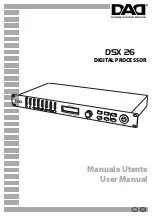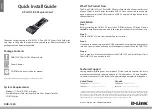
78M6612 Hardware Design Guidelines
AN_6612_007
6
Rev 2
2.4 Shunt Selection and Connections
The 78M6612 sensor input range is 12.5
μV (8.84 μVrms) to +250 mV (176.78 mVrms). The value of the
shunt to be used is usually a tradeoff between a higher shunt value to utilize the full analog sensor input
range of the IC and the power loss in the shunt.
Use the maximum rated load power when calculating the value of the shunt resistor for best utilization of
the ADC’s input range (
±
250 mVpp). Also, use the lowest operating LINE voltage (for example 90 VAC for
120 VAC rated systems) for this calculation. The maximum input current is then:
For example, if the maximum input power is 1.0 kW, the maximum input current is 11.12 A rms.
The resultant peak-to-peak current is calculated to be:
In the example above, the peak to peak value is 31.4 A.
A 15 m
Ω
shunt value fully utilizes the ADC input range. This shunt value produces a dissipated power of
1.85 W at maximum load current. In order to ensure more ADC signal margin due to transients and to
lower the power dissipation in the shunt resistor, a lower value shunt of 8 m
Ω
is recommended. In this
case, the shunt’s power dissipation reduces to 0.99 W at the maximum load current.
The next steps involved in the shunt resistor selection include considerations for power dissipation, initial
tolerance and the device’s temperature coefficient. In the case selected above, the power dissipated in
the shunt at maximum load current is 0.99 W. A 2 W rated device package is recommended for good
long-term reliability. The initial tolerance can be compensated during calibration. However, the
temperature coefficient plays a role in the overall accuracy and cannot be easily compensated. For
example, a temperature coefficient of 100 ppm/°C causes a resistance variation of 1% over the 100 °C
operating temperature environment.
IA
V3P3
SHUNT
750
0.1
μF
1000pF
Figure 4: Shunt Connections and Filtering





































